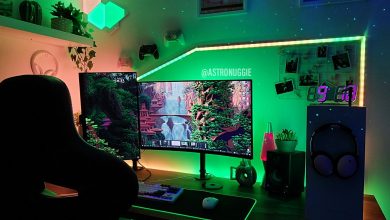The Evolution of Graphics Processing: How GPUs Transformed Gaming

Graphics processing units (GPUs) have revolutionized gaming over the past few decades. As GPU technology has rapidly advanced, it has enabled more immersive and visually stunning game experiences that were previously not possible. This evolution has directly impacted the online casino industry in particular.
The Rise of 3D Graphics and Programmable Shaders
In the early days of computer gaming, graphics were limited to simple 2D sprites with very basic textures and colors. The introduction of 3D-accelerated graphics cards in the mid-1990s allowed for much more complex and realistic 3D environments in games.
Cards like the 3dfx Voodoo popularized hardware transformations and lighting effects such as Gouraud shading.
Later GPU advances made programmable shaders possible, allowing developers to customize lighting, textures, and post-processing graphical effects for far more flexible and optimized visuals. Games could now render detailed textures at higher resolutions while maintaining performance.
For online casinos, this meant game developers could create much more immersive, 3D-rendered environments to house their slots and table games.
Increasing Processing Power Enables HD Gaming
As GPUs got more powerful thanks to innovations in architecture and manufacturing processes, they could handle gaming at high-definition 1080p resolutions while hitting the coveted 60 frames per second benchmark.
Popular GPUs like Nvidia’s 8800 GT and ATI’s Radeon HD 4850 brought reasonably priced HD gaming to the masses in the late 2000s.
Online casinos benefited as well with crisper and sharper graphics that reduced pixelation. Improved lighting and particles effects also heightened the realism of the virtual casino experience. From detailed wood textures on table games to intricate reel animations and particles in slots, HD gaming was a boon for online gambling visuals.
The Rise of Real-Time Ray Tracing
Ray tracing long has been the holy grail of graphics—the ultimate way to render photorealistic lighting and reflections in digital environments. Although ray tracing has existed for decades, it wasn’t until recently that GPUs became powerful enough to do highly complex ray tracing calculations in real time.
Nvidia’s RTX series introduced in 2018 was the pioneering line of consumer GPUs built specifically for real-time ray tracing by having dedicated ray tracing cores. Suddenly, games and online casinos could render stunningly realistic lighting, shadows, reflections, and environments to take immersion to new levels. Ray tracing is still evolving and primarily limited to premium GPUs, but it offers a glimpse into the future of computer graphics.
Accelerating Augmented Reality and Virtual Reality
Advanced GPUs are crucial for delivering compelling virtual reality (VR) and augmented reality (AR) experiences. Both VR and AR demand very high frame rates of 90 FPS minimum to limit simulation sickness as users move their heads. Rendering stereoscopic 3D environments twice for each eye also requires serious graphical horsepower.
As key players continue innovating in the VR and AR spaces, the required GPU performance demanded by these applications should spur additional progress. Online casinos, like those compared by experts in Onlinecasinos.com, are poised to benefit as VR and AR mature, letting users potentially access casino games via future head-mounted displays in new hybrid physical-virtual environments.
Cloud Gaming and Graphics Streaming
Emerging gaming platforms like Nvidia GeForce Now and Google Stadia are shifting graphics processing to the cloud to enable gaming across multiple devices, including mobile. Through fast internet streaming, users can access top-tier gaming visuals rendered on remote servers without needing powerful local hardware.
This cloud gaming approach may become an avenue for online casinos to expand their reach to users who couldn’t otherwise play graphics-intensive casino games on phones or lightweight laptops.
More casinos may adopt a streaming method to give their users access anywhere, anytime.
The Future of GPUs and Gaming Visuals
It’s difficult to overstate the improvements in gaming visuals fueled by GPU innovation over the past couple of decades. Current discrete GPUs like the AMD RX 7800 XT deliver performance that was essentially supercomputer-level just 10-15 years earlier.
And GPU advancement shows no signs of slowing down as new architectural changes, silicon fabrication methods, and hardware features continue pushing the limits. Machine learning acceleration is also becoming vital to help process graphics more intelligently. Online casinos are sure to embrace future GPU developments to keep their virtual environments on the cutting edge of realism.
Beyond photometric visuals, areas like physics engines for improved gameplay interactions as well as tools to easily build expansive 3D worlds will further enhance casino gaming realism. As player expectations grow alongside GPU performance gains, it may one day be indistinguishable between a real-life casino and a virtual recreation.
But to get there, GPUs will need to continue evolving dramatically like they have since their inception decades ago when graphics were simplistic and primitive by today’s standards.




